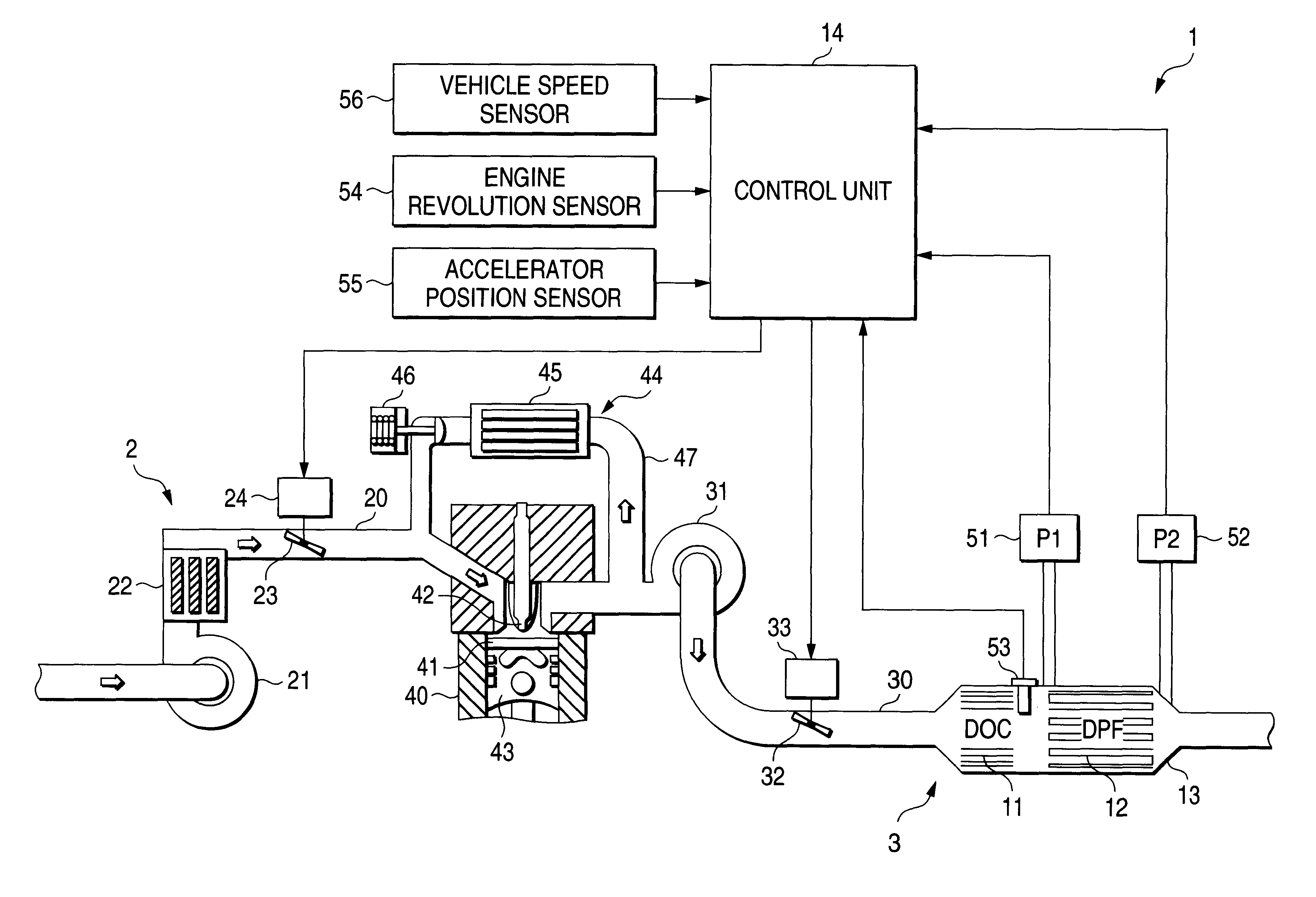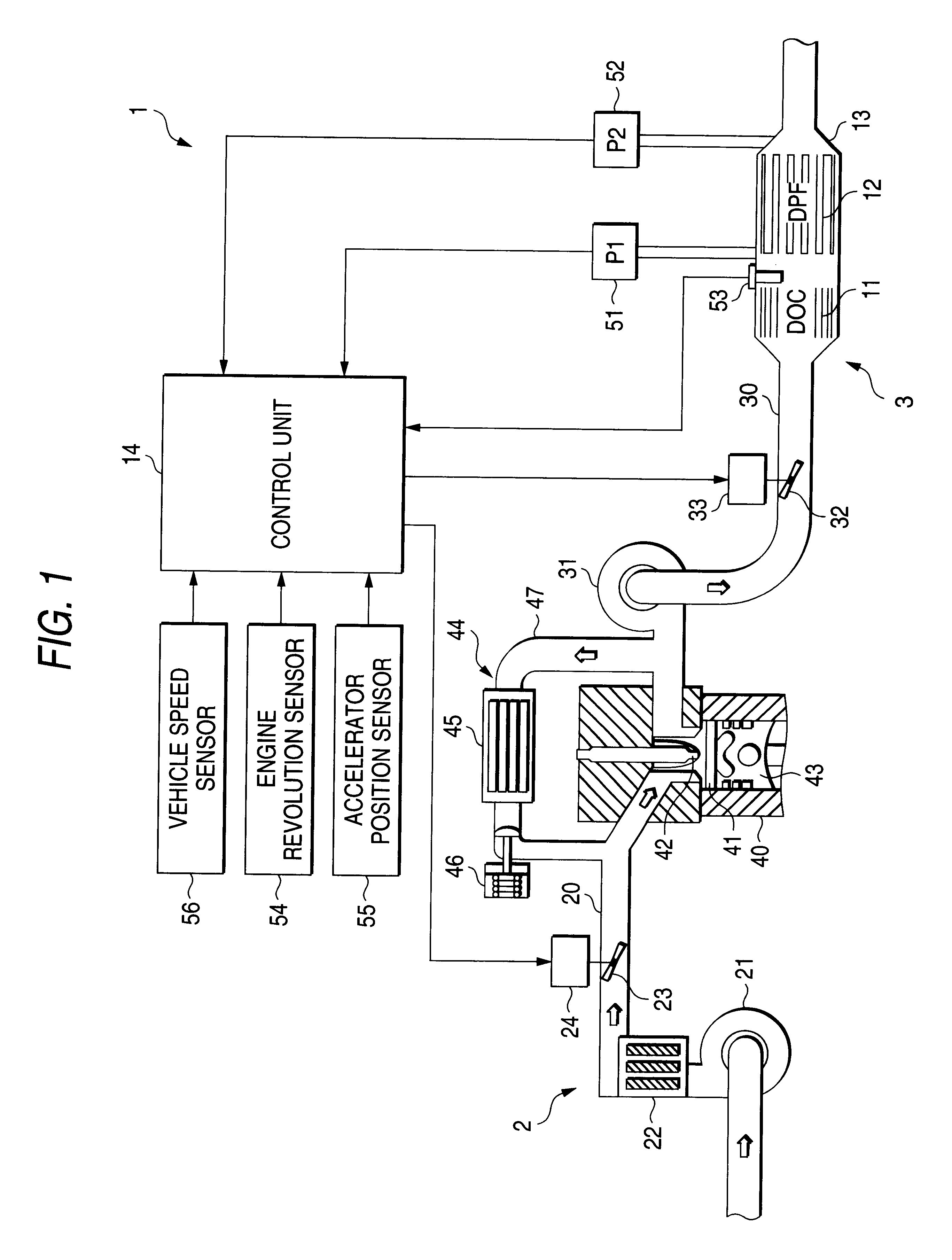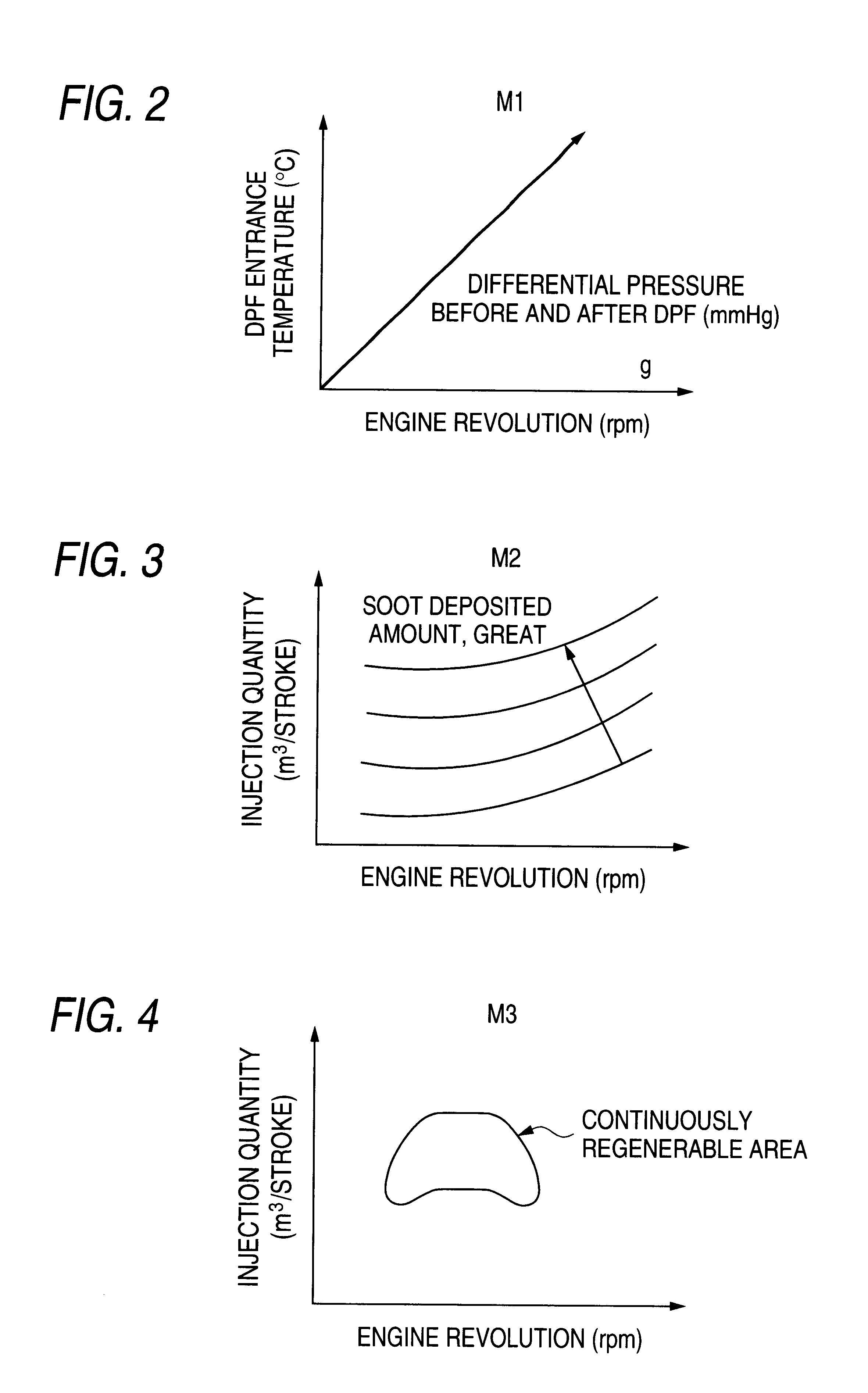Exhaust emission control device
a technology of emission control device and exhaust pipe, which is applied in the direction of electrical control, exhaust treatment electric control, separation process, etc., can solve the problems of engine output decline, dpf melting away, and soot not fully removed
- Summary
- Abstract
- Description
- Claims
- Application Information
AI Technical Summary
Benefits of technology
Problems solved by technology
Method used
Image
Examples
Embodiment Construction
An exhaust emission control device according to one embodiment of the present invention will be described below with reference to the drawings. FIG. 1 is a typical diagram showing the overall configuration of a diesel engine equipped with the exhaust emission control device. FIGS. 2 to 4 are graphs showing a control map for use with the control. Also, FIGS. 5 to 7 are flowcharts for explaining the action. Moreover, FIG. 8 is a control block diagram for explaining the functions.
A diesel engine in this embodiment comprises an engine main body 40, a suction system 2, an exhaust system 3, an Exhaust Gas Recirculation system (EGR system) 44 and a control unit (controller) 14, as shown in FIG. 1.
The suction system 2 comprises a suction pipe 20, a compressor 21, an inter-cooler 22 and a throttle (suction throttle) 23, whereby the air outside the vehicle is forcefully fed into the suction pipe 20 by the compressor 21, cooled by the inter-cooler 22 and introduced into an engine main body 40....
PUM
| Property | Measurement | Unit |
|---|---|---|
| temperature | aaaaa | aaaaa |
| temperature | aaaaa | aaaaa |
| temperature | aaaaa | aaaaa |
Abstract
Description
Claims
Application Information
 Login to View More
Login to View More - R&D
- Intellectual Property
- Life Sciences
- Materials
- Tech Scout
- Unparalleled Data Quality
- Higher Quality Content
- 60% Fewer Hallucinations
Browse by: Latest US Patents, China's latest patents, Technical Efficacy Thesaurus, Application Domain, Technology Topic, Popular Technical Reports.
© 2025 PatSnap. All rights reserved.Legal|Privacy policy|Modern Slavery Act Transparency Statement|Sitemap|About US| Contact US: help@patsnap.com



